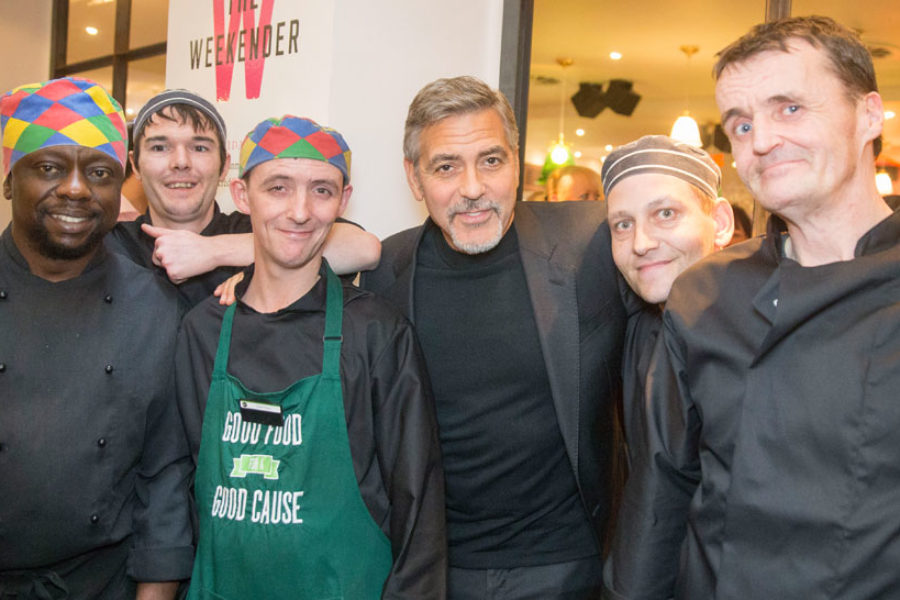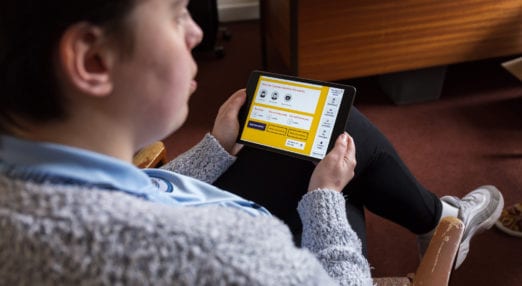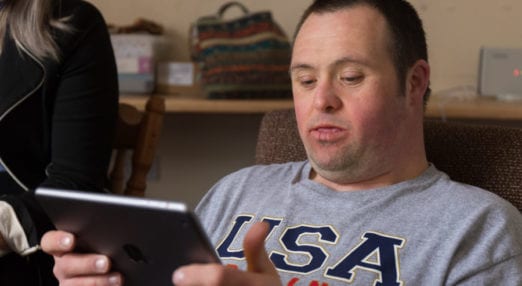Dreaming is the challenge for the third sector, not digital
Part 1: There’s room for everyone on the bus to the future.
It’s hard to feel empowered in Modern Britain. There must be politicians who are still working to keep the country running, but it’s difficult to see them through the haze of media coverage around Brexit. As we are hit with stats about the “crumbling” NHS, rise in crime, increasing inequality in education and rising depression amongst children and teenagers, it might seem as if our politicians have become absent parents. I mention this, not because I want to write a hysterical post about the UK’s political landscape, but to stress that Britain’s nostalgic obsession with its past shows a deficit of imagination to which there is no obvious solution.
This matters enormously in the Third Sector, when charities have had their government funding cut, as well as corporate donors pulling back because of the uncertainty around Brexit.
So the question I’m really interested in is ‘how do we respond?’.
It is absolutely fair that a charity’s primary concern should be about impact and meeting the needs of service users. I have also been quite shocked about the passivity around revenue generation.

My first poke into consciousness came in the form of a visit to a cancer charity where I was due to conduct an all-day workshop. At the end of the day, hugely inspired by everything I’d heard, I decided to visit the shop on my way out and ‘do my bit’ towards supporting the charity. I bought some cards, a tote bag and went on my way. It wasn’t until I got on the train that I’d realised the ink from the tote bag had rubbed off on my white blouse and that the texture of the bag had also ruined the fabric.
So what if this was the quintessential example of a ‘First World Problem’? I was personally quite angry that this bag, this symbol of doing something helpful, my portable billboard of personal virtue, had ruined a perfectly good piece of clothing. It made me question the quality of everything in that shop, which in turn made me wonder:
- Where do charities source these goods?
- And why is it they all seem to be selling t-shirts, mugs and pens, but very little product to:
- Actually help their service users?
- Educate a broader community?
- Or even help the cause of other charities by selling items that are environmentally friendly or promote good communication?
Someone can have cancer and still care about the planet. Having a serious or terminal illness, doesn’t mean you give up hope in every direction. In the case of those charities helping young people, why on earth are we using a corporate logo to brand goods, rather than the incredible artwork of the youngsters themselves? I’d much rather have a tea towel with a child’s sketch of what cancer looks like than somebody’s logo and it would make me much more aware of the cause.
So, what started off as a soured romance when Bag met Blouse, had ended up in me having a full-on existential crisis on behalf of the Third Sector. Representing all charities that I had encountered since joining Reason Digital, I began to worry…

- Could it be that in simply focusing on our own agenda, we might actually be creating problems elsewhere?
- Were we driving consumption of ‘stuff’ that people don’t need? What about waste? What about recycling? (Can anyone else hear ‘Earth Song’ by Michael Jackson playing?)
- Could we be sure that such ‘stuff’ was also ethically produced?
Around the same time I’d noticed a Springwise report about “Live Better With”, a company selling better stuff to help people with cancer. They articulate this as:
“Live Better With is here to make everyday living a little bit better for the millions of people living with cancer all over the world. Together with the cancer community, we handpick products that help ease symptoms and side effects, and improve the quality of day-to-day life.”
Now, I sort of understand why it’s easier for a commercial company to nail this space of meeting actual user needs with goods of real value…
… but yeah, not really.
Why is this the domain of a private healthcare company? Why are cancer charities failing to innovate in what they sell, alongside where and how they sell it? Why are people profiting from cancer suffering, when charities are cutting back on services because they no longer have the funds to offer the same depth and breadth of support?
My second poke came from visiting another cancer charity in London. When I asked them how significant was the revenue stream from their online store, they said it was really just a token representation.
Uh-huh.
What I took from that conversation is that certain external audiences, which may have included service users, expected to see an online shop, but that didn’t mean it had to be particularly useful either to the charity or to the user. Although I tried not to wince (enormously difficult for me), as someone who has spent a lot time in startup communities, it seemed alien to have an online shop ‘just because’. But hey, it’s not as if anyone really checks your numbers anyway. Who reads those long annual reports, frozen as PDFs and tucked away on your website so only The Really Determined or relevant members of staff can actually find the ‘information’?
And thus, by the time I discovered this headline…
Charities currently play no part in digital revolution, says Nesta chief
… featured in Third Sector magazine, October 2018, you’d probably imagine I’d have a fair amount of sympathy with Mr Mulgan.
But no!
Sort of.
Whilst it might be fashionable to patronise charities, I’m not sure that such put-downs are conducive to inviting positive action, or at least any action. Indeed some charities, with whom we’ve run digital training sessions, are so terrified by the fear of messing up, that they do nothing. Whilst the inaction is unhelpful, when we compare this to the absence of ethics in Silicon Valley (watch the Netflix documentary on the Fyre Festival), how sad that we choose to humiliate The Light Side.
But I’m not done with Mr Mulgan.

Firstly, this is not a revolution. We are not rebelling against anything, this is not a social uprising and we are not overthrowing government. I’ve been working in this space for fifteen years, the World Wide Web is much older still and the Internet even older. We have not been ambushed by the machines. It would be more accurate to call this an evolution. If it feels revolutionary, it’s because you’ve refused to pay attention and respond accordingly.
Frankly [insert air of resignation] whether you like it or not, homo sapiens will continue to advance over time by augmenting human capability with technology. We cannot stop this happening and this technological augmentation of human agency is evident in everything from cancer treatment to testing for certain genetic conditions. It is in the way we access and share knowledge on the Internet, to the way we can see and speak to loved ones regardless of physical distance. It is the way we open ticket barriers with our mobile phones and can navigate to new places through someone’s voice in our ear.
Resistance is actually futile.
For my second finger wagging point, I’d like to invite Tim Berners-Lee, INVENTOR OF THE WORLD WIDE WEB, into this article because he once stated that:
The Web as I envisaged it, we have not seen it yet. The future is still so much bigger than the past.
Yes, that’s right people, we still have everything to play for.
There’s no deadline for catching up. Facebook can’t predict our actions yet (though to be fair it might be close) and the EU is still up for giving tech corporates a good spanking when necessary.
The future is unlicensed and will always, at least in theory, be open to input from everyone. And even though I am, in all honesty, a teeny-weeny bit judgemental about the fact some companies (including those in the private sector) are only addressing the absence of digital infrastructure now, IN 2019(!), in the words of American baseball legend Yogi Berra… “it ain’t over, ‘till it’s over”. There’s room for everyone on the bus, even you guys… Tree Killer (that’s actually me) and PERSON WHO TEXTS IN ALL CAPS.
That’s the thing about this bus, you can enjoy a paper book and use Snapchat. You can stream music on Spotify and still struggle to find the link on the Amazon website to cancel your Prime subscription. It is OK to be a complex human being – full of contradictions and work in progress. Don’t get distracted by the propaganda that ‘Digital’ is the domain of young folk.
There is a quote by Douglas Adams that I have seen surface from time to time, where he declared (I imagine with a twinkle in his eye) …
A set of rules that describe our reactions to technologies:
1. Anything that is in the world when you’re born is normal and ordinary and is just a natural part of the way the world works.
2. Anything that's invented between when you’re fifteen and thirty-five is new and exciting and revolutionary and you can probably get a career in it.
3. Anything invented after you're thirty-five is against the natural order of things.
And though there might be *some* truth in this witticism, we cannot afford to hand over attention banks to a generation obsessed with the optimisation of convenience. We need your long view of life experience to enrich the Internet so we build platforms that help us become our best human selves. It is too important to give up.
Part 2: You’ll like the kids already on the bus.

There’s a bit of mantra in UX design circles about “show, don’t tell.” It means don’t write a long, preachy blog post without some cool examples of future-friendly charities doing smart work.
So here are some organisations that we think are doing a great job of revenue innovation.
Social Bite – a social enterprise tackling homelessness in Scotland
One example of a social enterprise that is doing a great job of innovation in revenue generation is Social Bite. A friend had told me about this organisation over Christmas, which is making monumental leaps and bounds in Scotland through its chain of cafes, inspiring partnerships and innovative ways to encourage community spirit and donations.
What’s amazing about Social Bite?
- They now have a chain of five cafes, where when you’re buying your lunch you can also give money at the same time for a drink/snack/meal for a homeless person to claim that day.
- They support other charities also focusing on homelessness, so they share the mission, rather than take a competitive position.
- In addition to the five cafes, they also have the “Vesta” restaurant, a partnership between Social Bite and Dean Gassabi of Maison Bleue and David Hall, the entrepreneur behind The Innis & Gunn Beer Kitchens and Tigerlily in Edinburgh. With a focus on vegan and vegetarian food, the restaurant also offers training opportunities, a homeless meal service and a continuation of the scheme where customers are encouraged to buy ‘Pay Forward’ meals for the homeless.
- They’re working on an accommodation model for homeless people, in partnership with the Cyrenians charity. More information about the blueprint for this model is online here: http://www.socialbitevillages.co.uk/.
- They’re inclusive about taking others on the journey with them. Perhaps because the social enterprise has been started by millennials, they understand this audience and the significance of shared experiences – hence the initiative “Sleep in the Park”. Young people are less interested in “owning”, “consuming” and “hoarding” – reflected in articles like this “Consumerism is crisis” and even the latest Netflix shows like the Marie Kondo show “Tidying Up”.

Band on the Wall – a not-for-profit tackling music education for young people.
What’s amazing about Band on the Wall?
- They offer a wide range of music education courses and learning opportunities.
- The charity is about preserving a historical building, but critically also about focusing on the future and opportunities for the next generation.
- They’re also a national promoter that operates beyond its showcase Manchester property. Many of their shows take place at other venues across the country and these touring programmes are an increasingly important part of their business model.
- Their relationship with the Manchester College – partnering with them to deliver accredited music education to young people, providing them with facilities and real-world music industry experience and contacts.
- They strike a balance between delivering high quality, non-mainstream music with more commercially viable programmes to strike a sustainable balance.
- Diversified offer through the bar where you can get a pre-gig pizza or a fancy gin and tonic.
- They leverage the benefits of their entertainment focus by showcasing behind the scenes footage.
- You can support the charity through online donations, membership subscriptions and one-off purchases through their shop or ticket sales.
Sensory Trust
A leading authority on inclusive and sensory design: making places accessible, attractive and meaningful for everyone, regardless of age, disability or background.
What’s amazing about the Sensory Trust?
- User-focused.
- Iterative approach to developing services and resources. They test/prototype with a small group of local users and scale out from there. This is the sort of behaviour that we in the tech industry would call ‘agile’ or ‘user-centred design’, but simply what Sensory Trust do naturally: hyper local project development, used to create and deliver consultation work with global reach.
- They have a small, but considered online shop and an Amazon store selling products designed using their knowledge and learning from their local prototyping. Their card game, ‘GoFindIt’ was in the top 10 of card games on Amazon.
Part 3: the bus isn’t owned by Uber.

I admire the work that Social Bite is doing, but its very success reminded me of a date I had in Copenhagen 18 months ago. We were chatting outside over coffee, when a boy around 11 years old approached the table asking for money, apparently fundraising for a Danish charity like the Scouts. My date refused and the boy was ushered away from the table. My date, in response to my arched eyebrow, explained that he did not believe in supporting such initiatives because he felt it was the role of government to support those in need, not the role of the people. He stated that he felt privately donating to these organisations undermined the need for government to fund the cause.
The eyebrow fell and for a brief moment in history I was speechless. It had never occured to me that donating to charity could be unhelpful behaviour. I think about this a lot now having returned to the UK and observing the state of our public services and national infrastructure. It feels particularly pertinent in reflecting on very recent headlines about the government outsourcing early years education to high street shops.
And back to the question “how do we respond?”.
Because I want charities to embrace digital and choreograph a group formation of the middle finger to those non-believers.
I want you to apply some radical, audacious creativity to innovating on how you generate revenue to support your services.
And we’re here to support that radical, audacious creativity in any way we can.
Part 4: let’s make buses great again
We also want people to appreciate you and understand the value of the services that charities provide. As Sir John Low, Chief Executive of the Charities Aid Foundation wrote in a report on “The value of charity to UK households”, published last September:
The range of things that our great charities do is amazing, as is the fact that virtually all of us have used them in one way or another over the years.
Shockingly though, many of us simply don’t realise that we are benefitting from the work of charities and are supported by generous donations of time and money made by people up and down the land.
Around one in three people simply do not realise that the things they might take for granted are provided by one of the tens of thousands of charities across the country. That is something all of us in charities need to change.
So what are we going to do about this? The above state of affairs isn’t news.
We cannot afford to wait for Brexit, for a second referendum, for a new government. We have to stop waiting for permission or to be rescued,
The future belongs to all of us, not just Bezos, Zuckerberg, Page and Brin. Where is our fighting spirit? Our grit? We need a shared, new vision which makes it clear to both the public and the government how we want to be supported. If we take full responsibility for a civil society, we absolve our government of their obligation, but when we also have a government that is simply failing its people, we need a little cunning to ensure the delivery of sustainable services.
The future is still up for the taking. So come on, let’s get out there and take it!
More tech for good this way...
-

Radical Accessibility: Report and Recommendations
Access the must-read report which takes a deep dive into brand new data. How inclusive and accessible have charity digital services been during Covid? Find out here...
Find out more
-

7 ways charities can embrace technology to improve their services
It’s no secret that the charity sector has been one of the hardest hit by COVID-19. Between the shops closing, volunteers unable to help, and a drop in fundraising opportunities, almost every aspect of a charity’s day-to-day has been impacted. And even though stores are allowed to open again soon, the whole sector will still be feeling the effects.
Find out more
-

Twitch for charities: Supercharge your digital donations strategy and level up using Twitch
With charities being set to lose more than £4bn in just three months as a result of COVID-19, the fundraising landscape has changed drastically for the third sector. And it feels like it happened overnight. With digital fundraising hastily climbing its way to the top of the priority list as events are cancelled all over the world, there are platforms out there which charities may have never interacted with before, that are now becoming an essential part of fundraising strategies. One of these platforms is Twitch.
Find out more



